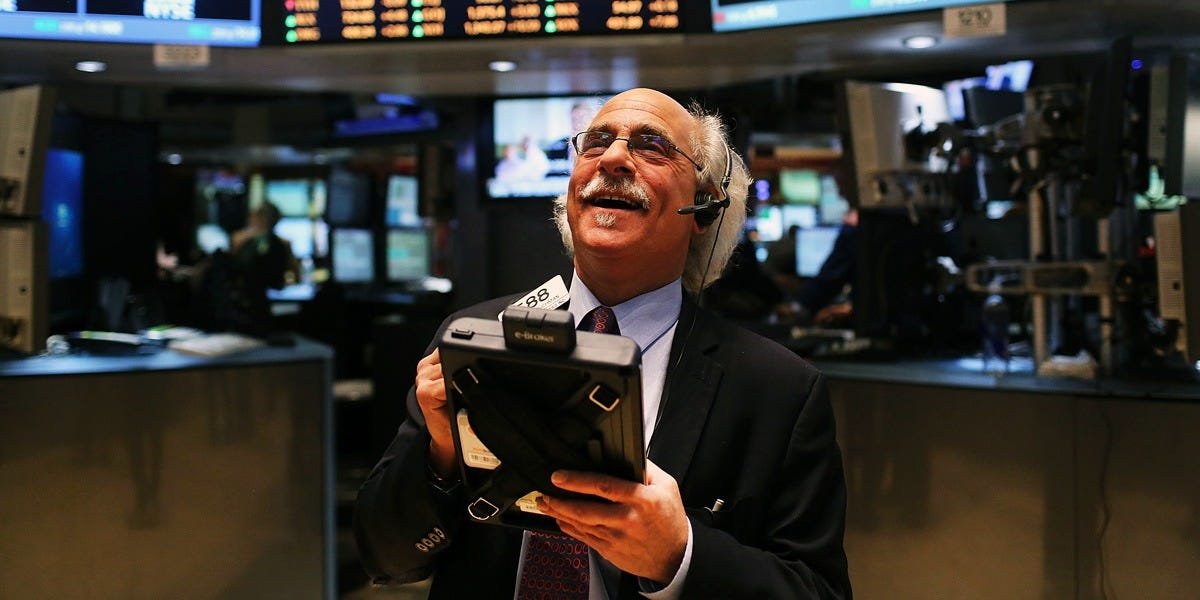- The S&P 500 hit intraday record highs on Tuesday as investors looked ahead to possible economic stimulus and a resolution to US-China trade issues.
- The all-time high in stocks comes after the market recovered from a bear market driven by rolling economic shutdowns caused by the COVID-19 pandemic.
- Factors driving the market higher since the March 23 low include monetary and fiscal stimulus policies from the Federal Reserve and Congress, as well as increasing hope of a successful COVID-19 vaccine being developed.
- The S&P 500 experienced a 35% sell-off from its high on February 19 to its low on March 23, making it the fastest bear market in history.
- Visit Business Insider’s homepage for more stories.
Nearly five months after the stock market low of March 23, investors have shrugged off concerns of the sharpest economic contraction since the Great Depression and bid up stocks to new all time highs.
The S&P 500 cruised past its previous all-time intraday high of 3,393.52 on Tuesday, climbing as much as 0.4%, to 3,395.06. The gains came as investors looked ahead to possible economic stimulus and a resolution to US-China trade issues. Traders have also been optimistic around the prospect of a successful COVID-19 vaccine.
The 55% rally from the low of March 23 to today’s new record highs represents one of the fastest bear-market recoveries in history.
The only faster bear-market recovery on record was in 1982, when the S&P 500 made a full recovery in just three months, according to Callie Cox, senior investment strategist at Ally Invest.

Still, the COVID-19 induced bear-market of 2020 holds the title of being the fastest bear market on record, having traded from 52-week highs to its low in just one month.
The swift recovery in stocks has had investors scratching their heads as the underlying economy remains weak. The unemployment rate is still above 10%, and second quarter GDP contraction at an annualized rate of -32.9% remains the worst on record.
But according to LPL, there are four valid reasons why the stock market is disconnected from the underlying economy, and since World War II, stocks have moved higher during seven of the past 12 recessions, with a median advance of 5.7%.
Stocks have continued to make gains in recent months on a number of different developments.
Monetary and fiscal stimulus policies from the Federal Reserve and Congress helped reassure investors that the government is doing all it can to help limit the economic harm caused by COVID-19.
The Fed, led by Jerome Powell, cut interest rates to near zero in March, and expanded its asset purchase policy to include corporate and municipal bonds.
Meanwhile, Congress passed legislation that included an expansion of unemployment benefits and stimulus checks to every American adult who has annual income of less than $100,000.
And while the expanded unemployment benefits expired in late July, the Trump administration and Congress are attempting to work out another deal to extend those benefits in some form.
Also helping prop up stocks included stronger-than-expected second quarter earnings. With 90% of companies having reported earnings so far this quarter, beats relative to analyst estimates have made records, according to Bank of America.
Finally, continued hope of a successful COVID-19 vaccine being developed has helped nudge investors to become more bullish on stocks.
According to Fundstrat's Tom Lee, the stock market will make "significant new highs" if and when a successful vaccine is developed, and there are 133 COVID-19 vaccine candidates under review.
And while the S&P 500 made new record highs today, the Dow Jones industrial average is still playing catch-up, sitting roughly 6% below its all-time intraday high of 29,568.57. The Nasdaq 100 index was the first index to hit fresh record highs, having done so in early June.
The S&P 500 traded up as much as 0.3% on Tuesday.
